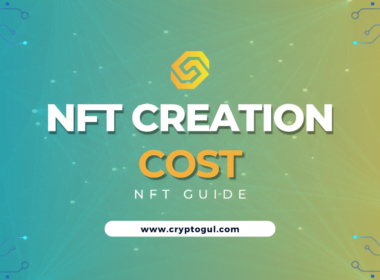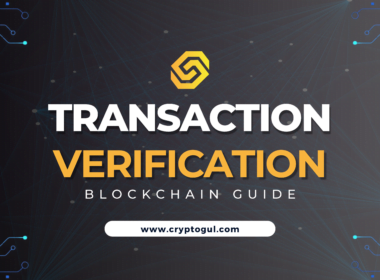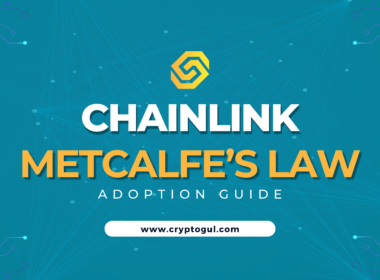Ever wondered how the digital and physical worlds can seamlessly intertwine? Welcome to the innovative world of physical Non-Fungible Tokens (NFTs), a revolutionary concept that is bridging the gap between your digital and physical lives. It’s a whole new realm of possibilities, authenticity, and ownership, ready to be explored.
Key Takeaways
Physical NFTs bridge the physical and digital realms, allowing for ownership and trade of unique items.
Blockchain technology provides a secure, transparent ledger to verify authenticity of Physical NFTs.
Notable examples include collaborations between Adidas Originals & Bored Ape Yacht Club as well as creations by RTFKT Studios, demonstrating potential to revolutionize industries & consumer experiences.
Understanding Physical NFTs

Physical NFTs, also known as Non-Fungible Tokens, bridge the gap between the physical and digital worlds. These unique digital assets breathe life into the digital world by linking physical assets to a digital token. Imagine owning a piece of digital art, but also having a physical object that corresponds to it. This is essentially what a physical NFT is – a digital representation stored on the blockchain connected to its physical counterpart.
Ownership, however, is just one aspect of their utility. The potential applications of physical NFTs are vast, ranging from authentication to improving consumer and in-person experiences. However, this emerging technology is not without its challenges. Issues such as counterfeiting, scalping, and the necessity for trust and transparency are some of the hurdles that need to be overcome.
Digital vs. Physical Assets
While physical assets are tangible items with inherent value, digital assets exist exclusively within the digital realm. Physical NFTs uniquely merge the physical and digital realms, creating a unique digital asset that is linked to a tangible, real-world object. This link occurs through a process known as tokenization, where physical items are linked to unique digital assets through the creation of digital tokens on a blockchain, thus representing the ownership rights of the physical item.
Physical NFTs can represent a wide array of items, including:
Paintings
Real estate
Collectibles
Fashion items
Music albums
Sports memorabilia
Effectively, physical NFTs democratize the ownership and trade of these items in the digital realm. They serve as a bridge between our digital and real world lives, allowing us to interact with our possessions in ways previously unimaginable.
Role of Blockchain Technology
Blockchain technology is the driving force behind physical NFTs. Blockchain serves as a reliable, secure ledger for confirming ownership and authenticity of these digital tokens. This technology offers a transparent, immutable, and decentralized ledger for verifying ownership and authenticity, bridging the gap between our digital and physical lives.
A physical NFT typically consists of a digital signature and metadata associated with each NFT, which is stored on the blockchain, making it immutable and providing a verifiable proof of ownership for the physical asset linked to the NFT. Documenting and confirming transactions for physical NFTs on the blockchain entails a consensus process and verification by the network, bolstering system trust and transparency.
Creating Physical NFTs

The creation of a physical NFT is a detailed yet thrilling procedure comprising several key stages. The journey begins with digitizing the item, a process that transforms the physical object into a digital representation. Various tools such as Krita for creating NFT art, scanners and cameras for capturing digital images of physical items, and platforms like Mattereum for generating asset passports can be utilized in this process.
Once digitized, the item’s essential details and its related physical asset are captured by the metadata and contracts. This metadata, which includes details such as:
the title
description
image
creator information
token ID
This electronic authentication serves as a verification of the physical asset and its physical counterparts.
Digitizing the Item
The process of digitizing a physical item to create an NFT involves obtaining a digital wallet, capturing an image of the item, and minting the NFT token. Photography plays a crucial role in this process, capturing the original image or artwork that will be tokenized and represented as an NFT.
Besides photography, there are other methods for digitizing physical items such as:
3D scanning
LASER triangulation
Structured light
Photogrammetry
Contact-based 3D scanning
These methods produce high-quality digital representations of the physical items, paving the way for the creation of the NFT. Ensuring the quality of the digital representation is crucial to the integrity of the physical NFT.
Metadata and Smart Contracts
Metadata and smart contracts are the backbone of physical NFTs, providing a digital record of the physical item and establishing the rules of ownership, transfer, and royalties. The metadata includes details such as:
The image
Properties
Characteristics
Name
Total supply
History of the NFT
This serves as a digital representation of the physical object and facilitates the NFT’s utility and functionality.
Smart contracts, on the other hand, are digital contracts that:
Define the rules of ownership and transfer of the NFT
Assign ownership
Facilitate the transfer of NFTs
Guarantee the authenticity and accuracy of the digital asset represented by the physical item.
Minting and Marketplace Listing
Following the preparation of the digital representation and the establishment of metadata and smart contracts, the NFT is then minted. Minting involves converting the digital representation into a crypto asset on a minting platform or marketplace.
After minting, the NFT can be listed on a marketplace. Some popular marketplaces for listing physical NFTs include:
These marketplaces offer users the ability to link digital ownership to physical items such as artwork, apparel, and vehicles. However, it’s important to note that the cost of minting and listing a physical NFT can vary, and the exact fees can fluctuate depending on factors like the time of day and the blockchain used.
Real-World Applications of Physical NFTs

Beyond being a captivating concept, physical NFTs have practical real-world applications. From art and collectibles to fashion and merchandise, and even real estate and property management, physical NFTs are revolutionizing various industries. For instance, the Flyfish Club NFT grants access to exclusive facilities in New York, demonstrating how NFTs can enhance consumer and in-person experiences.
Additionally, linking an NFT to preowned collectibles provides buyers with a thorough transaction history, improving transparency. Physical NFTs also have considerable potential in the supply chain, helping ensure continuity by minimizing instability and complexity and providing a guarantee of the authenticity of tracked supplies.
Art and Collectibles
Physical NFTs significantly impact the art and collectibles industry. They serve as a digital proof of ownership and authenticity for physical artworks, revolutionizing the concept of authenticity and ownership.
The digital token of a physical NFT serves to:
Certify the authenticity and ownership of the physical asset, such as a piece of art or a collectible
Revolutionize the way we view authenticity and ownership
Create digital scarcity, enabling the production of unique and limited edition items
Enhance the value of the artwork or collectible
Fashion and Merchandise
The fashion and merchandise industry also stands to be revolutionized by physical NFTs. Physical NFTs offer potential for increased engagement, new revenue streams, and improved authenticity and ownership verification.
Brands like:
Adidas
Puma
Gucci
Nike
Tiffany
Prada
RTFKT
Dolce & Gabbana
MAC
have all effectively utilized physical NFTs, demonstrating the potential of this technology in the fashion and merchandise industry. The integration of digital and physical merchandise through NFTs paves the way for an immersive experience that bridges the gap between the digital and physical realms.
Real Estate and Property Management
Similarly, the real estate industry is well-positioned for change through the application of physical NFTs. By representing real world assets like physical properties on the blockchain, physical NFTs can facilitate real estate transactions and property management, offering a seamless, secure, and efficient way to deal with property deeds.
In fact, it is possible that physical NFTs could replace paper Title deeds in real estate transactions in the future. These NFTs can act as a digital record of ownership, providing a secure and transparent record of property ownership on the blockchain, thus removing the necessity of physical paper documents and facilitating the transfer of ownership in real estate transactions.
Challenges and Obstacles
Despite their immense potential, physical NFTs face various challenges, including:
Legal and regulatory challenges
User adoption
Scalability
Market risks
These obstacles pose significant challenges in the physical NFT space.
The challenges of blockchain technology include:
The speed of the blockchain, as it can only process a finite number of transactions per second
Legal and regulatory issues, as the legislative system is still adapting to this novel concept
Technological limitations and safety concerns that need to be addressed
Notable Examples of Physical NFTs

Notwithstanding the challenges, several successful examples demonstrate the viability and potential of physical NFTs. Collaborations between Adidas Originals and Bored Ape Yacht Club, as well as innovative creations by RTFKT Studios are noteworthy examples of the successful implementation of physical NFTs.
These collaborations have not only created a buzz in the NFT space but also demonstrate the wide-ranging potential of physical NFTs. From art and fashion to real estate and collectibles, these examples show how physical NFTs can enhance consumer experiences and transform industries.
Adidas Originals and Bored Ape Yacht Club
The collaboration between Adidas Originals and Bored Ape Yacht Club is a striking example of physical NFTs in action. As part of this project, they produced digital and physical comic books, offering a unique blend of digital and physical experiences.
The collaboration has been positively received, generating excitement among NFT enthusiasts and collectors. It demonstrates how physical NFTs can offer exclusive access to certain advantages or experiences within the metaverse, changing the way consumers interact with brands.
RTFKT Studios
RTFKT Studios is another innovator in the physical NFT space. The virtual sneaker company specializes in creating and selling limited edition sneakers, demonstrating how physical NFTs can revolutionize the fashion industry.
The studio effectively uses NFC technology and NFTs to authenticate each physical copy with its digital counterpart, creating an immersive experience that bridges the gap between the digital and physical realms. This highlights the potential of physical NFTs in enhancing consumer experiences and transforming industries.

Future Prospects of Physical NFTs
They definitely hold a promising future. With potential applications in supply chain management, DeFi, and Web3 identification, they are set to further integrate into various industries and consumer experiences.
With potential applications spanning from supply chain management to DeFi and Web3 identification, NFTs could significantly alter our interaction with possessions and bring about industry-wide transformations.
Summary
Physical NFTs represent an exciting amalgamation of the digital and physical realms, offering a new perspective on ownership, authenticity, and consumer experiences. Despite the challenges, the potential is immense, with successful examples already demonstrating their viability in various industries. As the technology evolves and matures, we expect to see them playing an increasingly significant role in our digital and physical lives.
Frequently Asked Questions
What is an example of a physical NFT?
Physical NFTs are digital tokens that link to tangible assets, such as artworks, tickets, and property deeds, allowing for proof of ownership over real-world items.
Can a physical product be an NFT?
Yes, physical products can be NFTs as they have a unique digital identity stored on a blockchain that verifies ownership and authenticity.
Can NFTs be used for physical assets?
NFTs have enabled tokenization of physical assets, thus allowing them to be linked to the digital realm. This connection has made it possible for NFTs to be used for a wide range of applications such as art and collectibles, real estate and luxury goods.
How are physical NFTs created?
They are created by digitizing an item, adding metadata and smart contracts, and minting the asset on a marketplace. This process enables digital ownership of physical items.
What challenges face the physical NFT space?
The physical NFT space faces numerous challenges, including legal and regulatory complexities, user adoption, scalability, and market risks.








